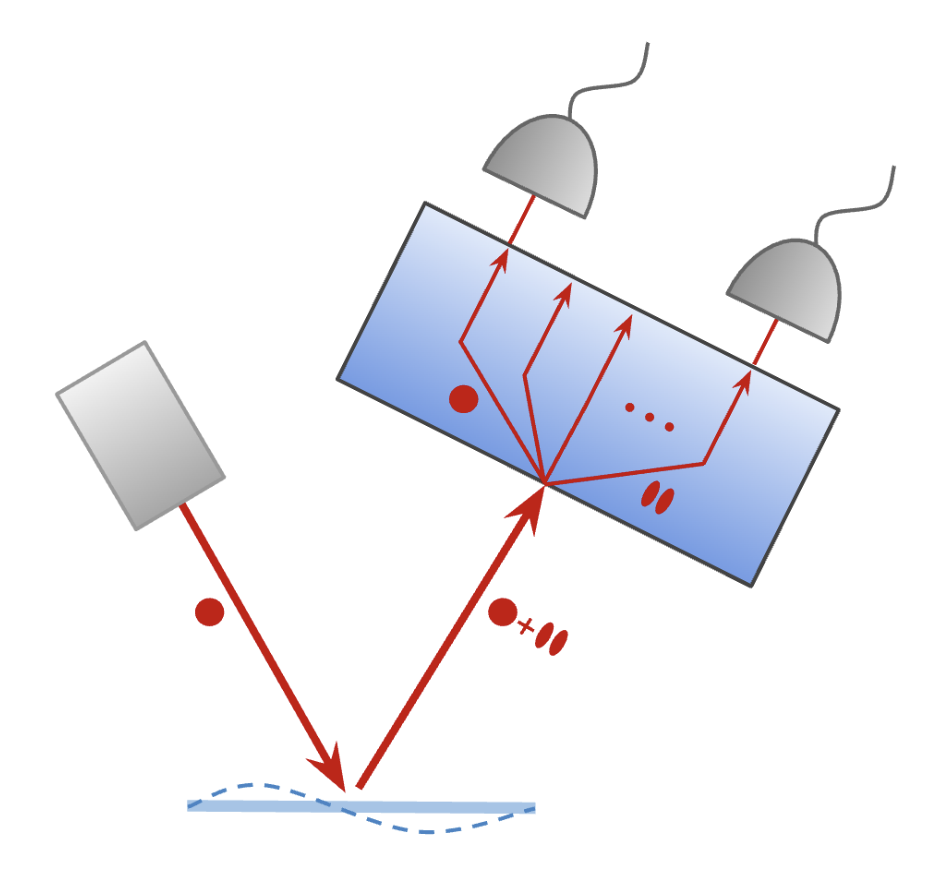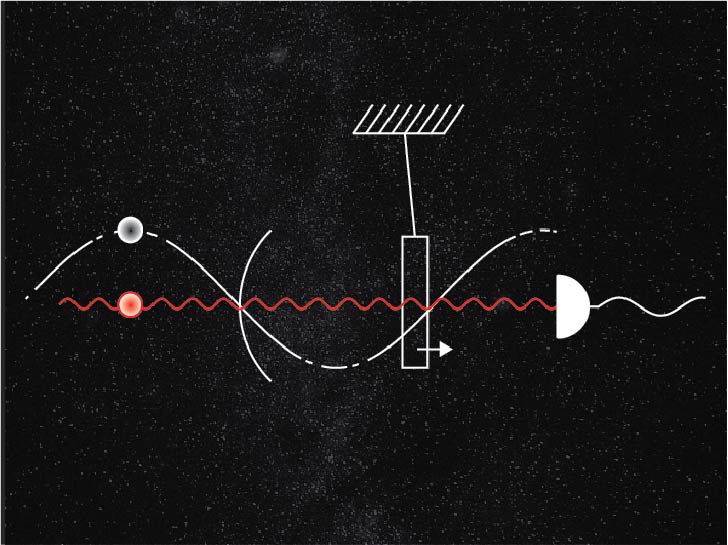A typical nanomechanical oscillator exchanges thousands of phonons with its thermal environment over one period. Reducing this number to less than one--a condition known as "quantum coherence"--is a basic requirement for ground-state cooling and applications such as quantum memory storage. We are exploring a class of quantum-coherent nanomechanical resonators based on high-stress silicon nitride thin films. Leveraging an effect called dissipation dilution, these devices can oscillate at radio frequencies with quality factors approaching 1 billion, enabling quantum experiments even at room temperature.
Coupling high-Q nanomechanical oscillator to optical microcavities has recently enabled back-action-limited position measurements--that is, measurements for which the motion of the oscillator is dominated by radiation pressure shot noise (a physical manifestation of the uncertainty principle). Back-action-limited measurements are the starting point for a broad range of experiments ranging from feedback-based ground state cooling and squeezing of mechanical motion, to investigation of back-action evasion techniques, to generation of ponderomotively squeezed light. We are attempting to accessing this regime at room temperature and low RF frequencies (where numerous force sensing applications may be envisioned) using a silicon nitride nano-trampoline coupled to a high finesse optical cavity.

We explore the use of a spatial mode sorter to image a nanomechanical resonator, with the goal of studying the quantum limits of active imaging and extending the toolbox for optomechanical force sensing. In our experiment, we reflect a Gaussian laser beam from a vibrating nanoribbon and pass the reflected beam through a commercial spatial mode demultiplexer (Cailabs Proteus-C). The intensity in each demultiplexed channel depends on the mechanical mode shapes and encodes information about their displacement amplitudes. As a concrete demonstration, we monitor the angular displacement of the ribbon’s fundamental torsion mode by illuminating in the fundamental Hermite-Gauss mode (HG00) and reading out in the HG01 mode. We show that this technique permits readout of the ribbon’s torsional vibration with a precision near the quantum limit.
Optomechanical accelerometers utilize a mechanical resonator as a test mass and an optical cavity for displacement based readout. Miniaturization of these devices increases bandwidth at the price of sensitivity, ultimately limited by radiation pressure back-action. We are pursuing a new generation of chip-based optomechanical accelerometers that can operated at the back-action limit with sensitivities at the level of 10-8 g (the acceleration due to gravity at the earth's surface) and bandwidth of ~1 kHz. Leveraging ponderometive squeezing and measurement-based feedback might allow these devices to be operated at or beyond the standard quantum limit.

Recently it has been proposed to search for dark matter with mechanical sensors, using the fact that all dark matter candidates couple to the size or position of atoms. Cavity optomechanical systems present a unique opportunity to search for this signal in a table-top environment, by leveraging a combination of ultra-low mechanical dissipation, quantum-limited optical readout, and a form factors amenable to operation in deep cryogenics and/or multi-detector arrays. We are pursuing a new type of dark matter detector based on a centimeter-scale silicon nitride membrane fixed to a Beryllium mirror, operating as an optomechanical accelerometer. (More...)
Mailing address:
College of Optical Sciences
University of Arizona
1630 E. University Blvd.
Tucson, AZ 85721, USA
Phone: 520-621-2584 (Office)